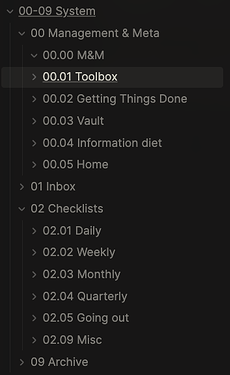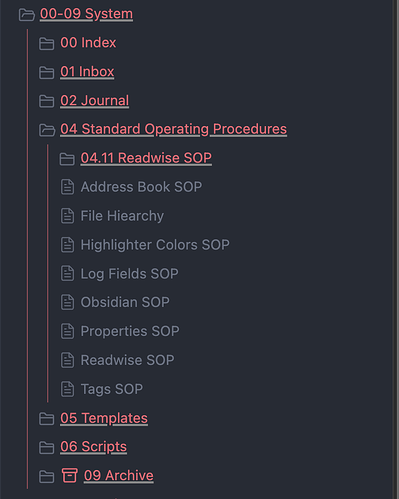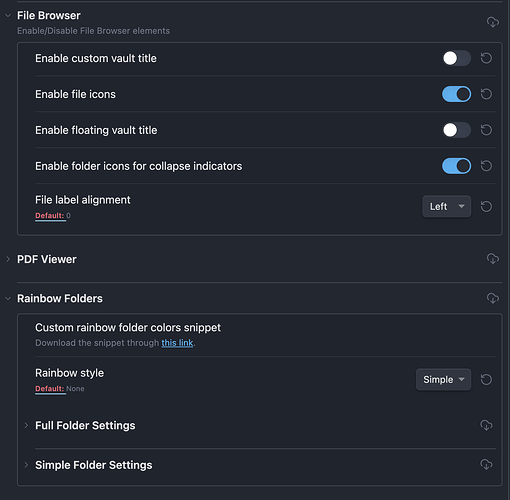I have been struggling to decide how to use Management & Meta.
You cannot have an M&M for an ID, since decimals end there. However, I can see cases where I would want to have a brief note for an ID.
A folder note plugin for Obsidian allows me to create an abstraction which provides a convenience, by having a note about a folder with the same name that is hidden from view.
If I implement this in my note-taking app, then the way M&M for categories and areas are handled will be inconsistent thorough the system. I will also rely on advanced functionality (that is not future-proof).
I cannot bring myself to an either-or kind of choice. My thinking goes, that at least for IDs I should use the folder note functionality.
In this folder note, I would have information about that ID for other places of the system also (if applicable). I guess this would be a sort of ‘index’ for an ID… but isn’t all this really just overthinking it? Should I not give up on using notes for IDs?
Perhaps the way I have my system set up is the culprit. See, I have many notes about the system, the way I do things, how I organise my projects… the way I review and manage certain things: all defined in notes, as if programmatically.
I have realised before that what I use the folder for, is not quite what it is intended to be (I think), but thought it would be fine. But perhaps, I should create a distinct category, say 03 Organisation for this purpose.
This would also not quite solve the solution and is something else entirely, since IDs stay the same. Perhaps I would need to find a way to store information about IDs in the indexes instead? I am yet to dive into the concept of an index and have not set up one yet, so I don’t know.
Please let me know what you think about the dilemma. Any input is valuable.


